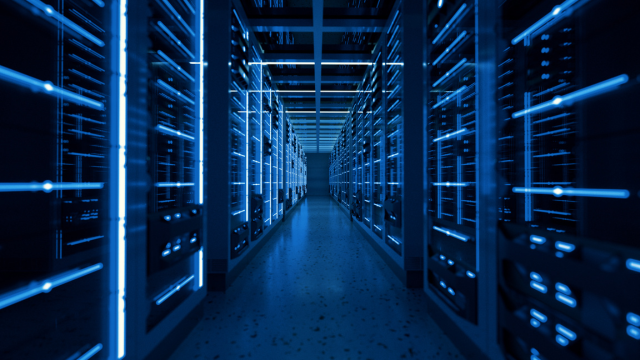
Today’s users demand access to high-quality content at faster speeds and reliability than ever before. For businesses to continue to supply always on websites and applications, their physical infrastructure needs to adapt.
The vast majority of the internet’s computing power stems from only a handful of major markets. In the U.S., 60 percent of all colocation comes from the top 20 markets. Data storage is even more centralized with 70 percent of the market being sourced from six major markets.
This centralization is harder to maintain though, as the needs of mobile users grow both in raw numbers as well as geographic area. As demand for content grows outside of the major markets, the underlying infrastructure becomes strained as data is sent from major markets out to other computing centers.
What is an Edge Data Center
One response to changing online needs has been the rise of edge data centers.
Edge computing is a response to a fundamental law of data storage and delivery. Essentially, data is processed more efficiently when the computing power is closer to the thing or person generating it. Thus, as the need for internet services grow, the physical “edge” of the internet also needs to grow to match demand.
A few years ago, NetworkWorld published an article that still accurately lists seven criteria for defining edge data centers. Here are three points that stand out about edge data centers.
1. Location, Location, Location
One of the key qualities of edge data centers is that they should be located near the edge.
For instance, Phoenix-area businesses looking for an infrastructure provider close to home traditionally have relied heavily on Los Angeles for their computing needs. However, as the amount of content being shared online has grown, providers have spent resources to route data from centers in the largest cities to metro areas on the edge, such as Phoenix. (Shameless plug: INAP has data centers in Phoenix and other edge cities.)
2. Majority of Local Traffic
The point of building data centers in these edge cities is to bring your infrastructure closer to the eyes that will be viewing your content. Therefore, edge data centers need to be serving the markets in which they are located.
Using the example above, if the majority of end users for these Phoenix-area businesses are located in Arizona, it makes more sense for these companies to have their servers closer to their customers.
Sure, those end users will likely receive the same quality of content regardless of where the servers are physically located. However, depending on the type of information that’s being sent, that latency might be noticeable. Edge data centers allow businesses to put servers and information closer to the people who will be accessing it – both digitally and physically.
3. All the Bells and Whistles
Just because these sites aren’t necessarily built in the most populated and largest markets doesn’t mean they shouldn’t include the same features and updates as the facilities in the world’s largest metropolitan areas.
The data centers in edge cities should be Tier 3-designed and built with the same power, reliability and redundancy requirements as similar facilities in the world’s largest markets. (Another shameless plug: All of INAP’s data centers are Tier 3-type regardless of market.)
How to Get Your Infrastructure in an Edge Data Center
If you’re looking to increase your content delivery to regions outside of major computing markets, INAP has you covered. We operate in 56 data centers around the world in established and growing technology hubs.
Our facilities are equipped with top-of-the-line technology and solutions to improve your infrastructure, including colocation, managed hosting, cloud, and network services. Contact us today and a data center specialist will help you determine the best services and location for your business to ensure your servers and environment are placed close to your end users.



